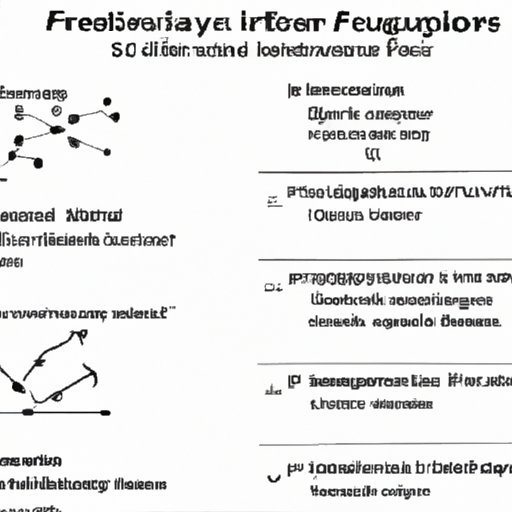
Introduction
Have you ever wondered how to find inverse functions and how they can be applied in real-life situations? Inverse functions play a significant role in mathematics and numerous fields. A clear understanding of how to find inverse functions can help you find the original function, solve real-life problems, and improve your mathematical skills.
This article aims to provide readers with a comprehensive guide on how to find inverse functions, why it is essential to understand inverse functions, common mistakes to avoid, and practical exercises that will help readers master this crucial concept.
A Step-by-Step Guide on Finding the Inverse of a Function
Before we dive into how to find inverse functions, let’s define what an inverse function is. An inverse function is a function that undoes the action of another function.
To find the inverse of a function, follow these steps:
- Replace f(x) with y. This reflection helps to simplify the calculation.
- Swap x and y to get x = f^-1(y).
- Solve for y.
- Replace y with f^-1(x).
Let’s apply these steps to the function f(x) = 2x + 4.
- Replace f(x) with y: y = 2x + 4.
- Swap x and y: x = 2y + 4.
- Solve for y: y = (x – 4) / 2.
- Replace y with f^-1(x): f^-1(x) = (x – 4) / 2.
Therefore, the inverse function of f(x) = 2x + 4 is f^-1(x) = (x – 4) / 2.
It is worth noting that not all functions have an inverse. For a function to have an inverse, each x value should correspond to one y value and vice versa.
Understanding how to find inverse functions is critical in solving real-life problems involving various fields, including science, finance, and engineering.
The Importance of Finding Inverses in Real-Life Applications
In real-life applications, inverse functions are essential in determining the input value from the output value. In other words, inverse functions help us find the original value from the result if we know the operation that changes it.
In science, inverse functions are used in determining the initial mass of a radioactive substance. During the half-life process, the initial mass reduces by half. By finding the inverse function, we can determine the original mass before radioactive decay began.
In finance, inverse functions help in calculating compound interest. By finding the inverse, we can determine the original principal amount invested. Similarly, in predictive analysis, we can use inverse functions to determine the original variable of interest, given the outcome.
In understanding real-life applications, it is crucial to comprehend how to find and apply inverse functions in solving various real-life problems.
The Challenges of Finding Inverse Functions and How to Approach Them
People face many challenges when attempting to find inverse functions. One primary challenge is the complexity of some functions, such as trigonometric functions and logarithmic functions, which require the use of special techniques.
Another challenge is errors in computation leading to incorrect answers, especially in cases where complicated algebraic manipulations are involved.
To approach such challenges, it is crucial to have a firm foundation in algebraic manipulations and to practice solving problems that involve various functions. Additionally, it is vital to seek assistance from tutors or peers, especially in cases of complex functions.
Common Mistakes to Avoid When Finding Inverse Functions
Although finding inverse functions follows specific steps, it is common for people to make mistakes in the calculation process. Here are some common mistakes to avoid:
- Misunderstanding the order of operations and algebraic manipulations.
- Confusing the dependent and independent variables.
- Mistaking a function for its inverse.
It is essential to understand the common mistakes to avoid and pay close attention to the problem’s details.
Using Graphs to Identify and Verify Inverse Functions
Graphs play a crucial role in identifying and verifying inverse functions. To verify whether a function has an inverse, we can use the horizontal line test. If any horizontal line intersects the graph only once, then the function has an inverse.
When graphing the inverse function, it becomes apparent that the original function and the inverse are reflections of each other over the line y = x. This property is helpful when verifying if a function is its own inverse.
Let’s take the function f(x) = 1/x as an example. The graph of f(x) is a hyperbola. By using the horizontal line test, we can verify that f(x) has an inverse.
The inverse function of f(x) = 1/x is f^-1(x) = 1/x. Graphing the original function and its inverse confirms that they are indeed reflections of each other over the line y = x.
Practical Exercises to Help Students Master the Concept of Inverse Functions
Students can practice finding inverse functions using a variety of exercises, ranging from simple to complex problems. Here are some practical exercises to help students master the concept of inverse functions:
- Find the inverse of f(x) = 3x + 2.
- Find the inverse of f(x) = x^2 – 4.
- Find the inverse of f(x) = e^x – 1, where e is Euler’s number.
- Determine the inverse of f(x) = sin(x), where x is the angle measured in radians.
By working through a variety of problems, students can acquire the necessary skills and knowledge to solve inverse functions successfully.
Conclusion
Inverse functions play a critical role in mathematics and various fields. Finding the inverse function is essential in solving real-life problems. The step-by-step process of finding the inverse function involves replacing f(x) with y, swapping x and y, solving for y, and replacing y with f^-1(x).
Understanding common mistakes and using graphs to identify and verify inverse functions can help mitigate the challenges involved in finding inverse functions.
Finally, students can practice finding inverse functions using various exercises. By doing so, they will develop the necessary skills to solve real-life problems and enhance their mathematical proficiency.




